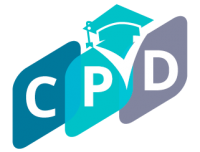Introduction:
In an interconnected world, where cultural diversity is celebrated, multilingual childcare emerges as a powerful way to enrich a child’s early development. The ability to communicate in multiple languages not only broadens a child’s cultural horizons but also enhances cognitive, social, and emotional growth. In this article, we explore the myriad benefits of embracing language diversity in childcare settings and the positive impact it has on a child’s overall development.
- Cognitive Advantages: Exposure to multiple languages during the formative years offers cognitive benefits to children. Research suggests that bilingual or multilingual children often demonstrate enhanced problem-solving skills, better attention control, and improved memory compared to monolingual peers. Engaging with different languages stimulates various areas of the brain, contributing to cognitive flexibility and adaptability.
- Early Language Acquisition Skills: Multilingual childcare provides an optimal environment for the early acquisition of language skills. Children are naturally inclined to absorb languages, and exposure to multiple languages from a young age sharpens their language-learning abilities. They become adept at recognizing different sounds, patterns, and structures, laying a strong foundation for future language acquisition.
- Cultural Understanding and Appreciation: Language and culture are intricately connected, and exposure to multiple languages in childcare settings facilitates cultural understanding and appreciation. Children learn not only the words and grammar but also the cultural nuances embedded in each language. This exposure fosters open-mindedness, tolerance, and a respect for cultural diversity.
- Enhanced Communication Skills: Multilingual children develop superior communication skills. They learn to express themselves effectively in different linguistic contexts, adapting their communication style to suit various situations. This adaptability enhances their overall communication competence and prepares them for effective interaction in diverse social settings.
- Global Perspectives and Connectivity: In a globalized world, the ability to communicate in multiple languages is a valuable asset. Multilingual childcare equips children with the skills to connect with people from different linguistic and cultural backgrounds. This early exposure lays the groundwork for fostering global perspectives, promoting international understanding, and facilitating meaningful connections across borders.
- Increased Empathy and Perspective-Taking: Multilingualism nurtures empathy and perspective-taking skills. Children who can communicate in different languages gain insights into diverse perspectives and experiences. This exposure fosters an understanding of varying viewpoints, instilling empathy and tolerance as children grow and engage with a culturally rich and interconnected world.
- Improved Executive Functioning: Executive functions, such as problem-solving, decision-making, and cognitive flexibility, are positively influenced by multilingualism. Children exposed to multiple languages develop a heightened ability to switch between tasks, manage cognitive load, and exhibit better executive functioning. These skills contribute to academic success and overall cognitive development.
- Linguistic Resilience: Exposure to multiple languages enhances linguistic resilience. Children become more adaptable to different linguistic challenges, such as code-switching or navigating between languages seamlessly. This linguistic resilience not only supports academic success but also prepares children for a world where language diversity is a valuable skill.
- Bolstered Self-Esteem and Identity: Multilingualism contributes to a strong sense of self-esteem and identity in children. Being able to communicate in different languages fosters a sense of accomplishment and pride. Children become confident in their linguistic abilities, cultivating a positive self-image that extends beyond language to other aspects of their identity.
- Elevated Metalinguistic Awareness: Multilingual children often exhibit heightened metalinguistic awareness. They develop an understanding of language structures, grammar, and syntax, which not only aids in their proficiency in multiple languages but also transfers to enhanced literacy skills. This metalinguistic awareness provides a foundation for successful language learning in various contexts.
- Early Exposure to Multicultural Literature: Multilingual childcare settings often introduce children to a wealth of multicultural literature. Exposure to stories, books, and rhymes in different languages enriches a child’s literary experience. This exposure broadens their literary repertoire and introduces them to diverse cultural narratives, fostering a love for reading and a curiosity about the world.
- Preparation for Academic Success: Multilingualism has been linked to academic success. Children who are fluent in multiple languages often perform well academically, demonstrating proficiency in literacy, numeracy, and critical thinking. The cognitive advantages gained through multilingualism contribute to a strong academic foundation.
- Family and Community Connection: In multilingual childcare settings, language diversity often reflects the linguistic backgrounds of families and communities. Embracing multiple languages strengthens the connection between childcare providers, families, and the broader community. It creates a sense of inclusivity and cultural affirmation, fostering a collaborative and supportive environment.
- Lifelong Language Learning Mindset: Multilingual childcare instills a lifelong love for language learning. Children who grow up exposed to multiple languages are more likely to embrace language learning as a continuous and enjoyable process. This mindset positions them to be open to acquiring new languages throughout their lives.
Conclusion:
Multilingual childcare is a gift that keeps on giving, offering children a spectrum of cognitive, cultural, and social benefits. The ability to communicate in multiple languages not only opens doors to diverse opportunities but also enriches a child’s understanding of the world. By embracing language diversity, childcare settings play a pivotal role in shaping global citizens who are not only linguistically adept but also culturally sensitive and interconnected.
